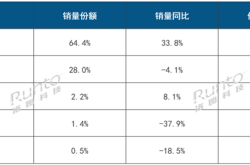Are the Priorities Misplaced in the Relentless Pursuit of Thinness and Lightness in Foldable Smartphones?
![]() 06/23 2025
06/23 2025
![]() 651
651
It is unclear when the promotional focus of foldable smartphones (this article mainly refers to large-screen foldable smartphones) gradually shifted from "large screen" and "high office attributes" to "comprehensive thinness and lightness." This shift is understandable, given that early foldable smartphones were indeed bulky, weighing close to 300g, which was a deterrent for many potential buyers. Indeed, a significant number of users decided against purchasing foldable smartphones due to their weight.
Perhaps recognizing this opportunity, mobile phone manufacturers have been striving to reduce the weight of foldable smartphones, from 300g to 250g, then to 230g, and now some models have achieved a weight of 219g, lighter than most flagship phones focused on imaging and performance.
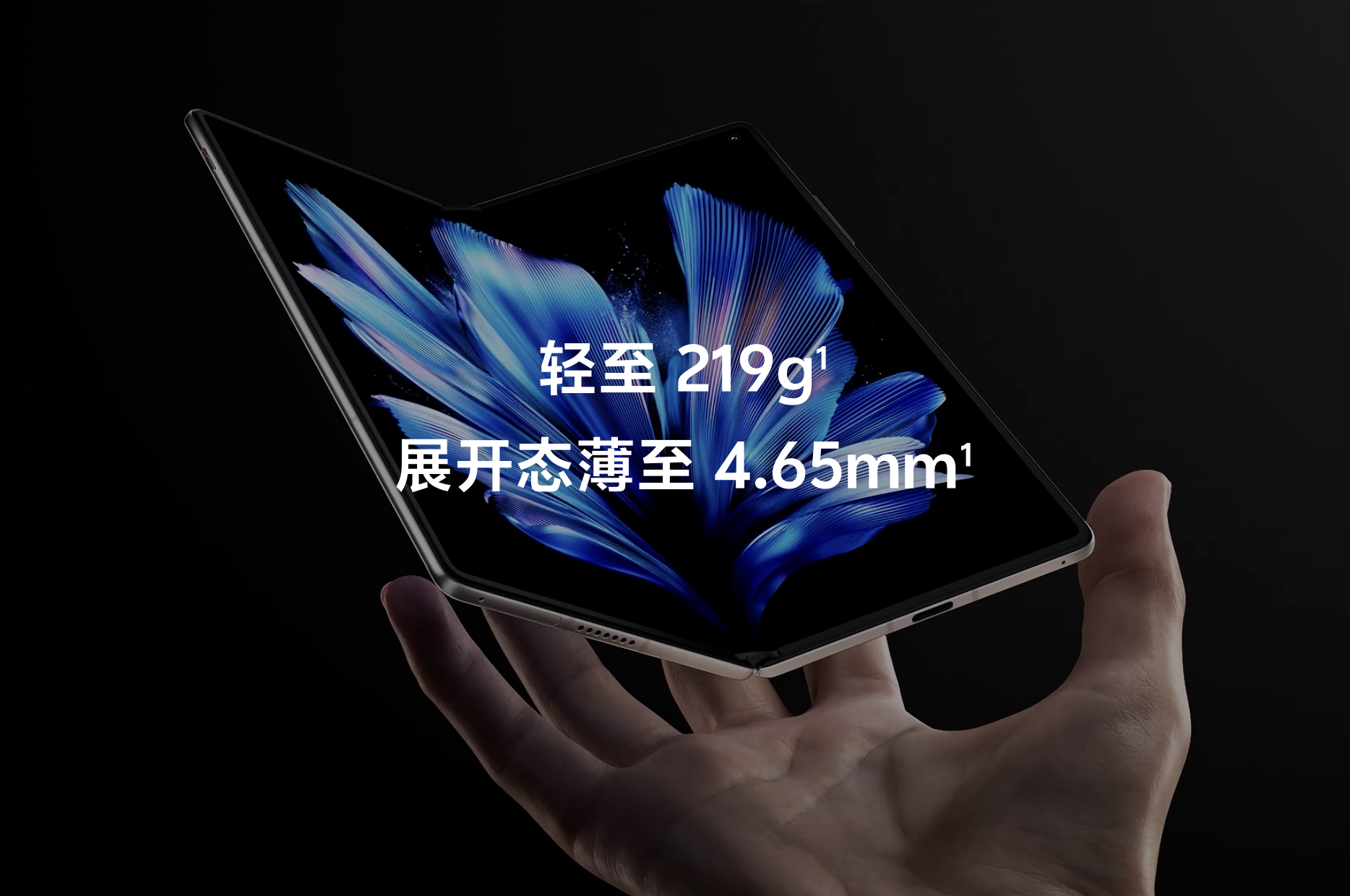
(Image source: vivo official)
From a technical perspective, this innovation is undoubtedly commendable. However, it seems that a crucial point has been overlooked: the biggest advantage of foldable smartphones over straight smartphones is their enhanced practicality.
Currently, the development direction of foldable smartphones appears somewhat off track.
Is it not beneficial for foldable smartphones to be overly thin and light?
As portable electronic devices, most users naturally desire foldable smartphones to be as light and thin as possible. Moreover, the attributes of thinness and lightness inherently confer a sense of "premium" to the phone.
But what is the cost of making foldable smartphones thinner and lighter? It is obviously a compromise in configuration. Although manufacturers claim at product launches that they have employed new technologies to enhance the user experience, the gap in hardware is something that software algorithms can never fully compensate for.
Take a certain foldable smartphone as an example. Its previous generation was celebrated for being an "all-around powerhouse" with impressive screens, cameras, design, and office attributes. It had a clear distinction from straight smartphones, offering not only a larger screen but also capabilities that straight smartphones lacked.
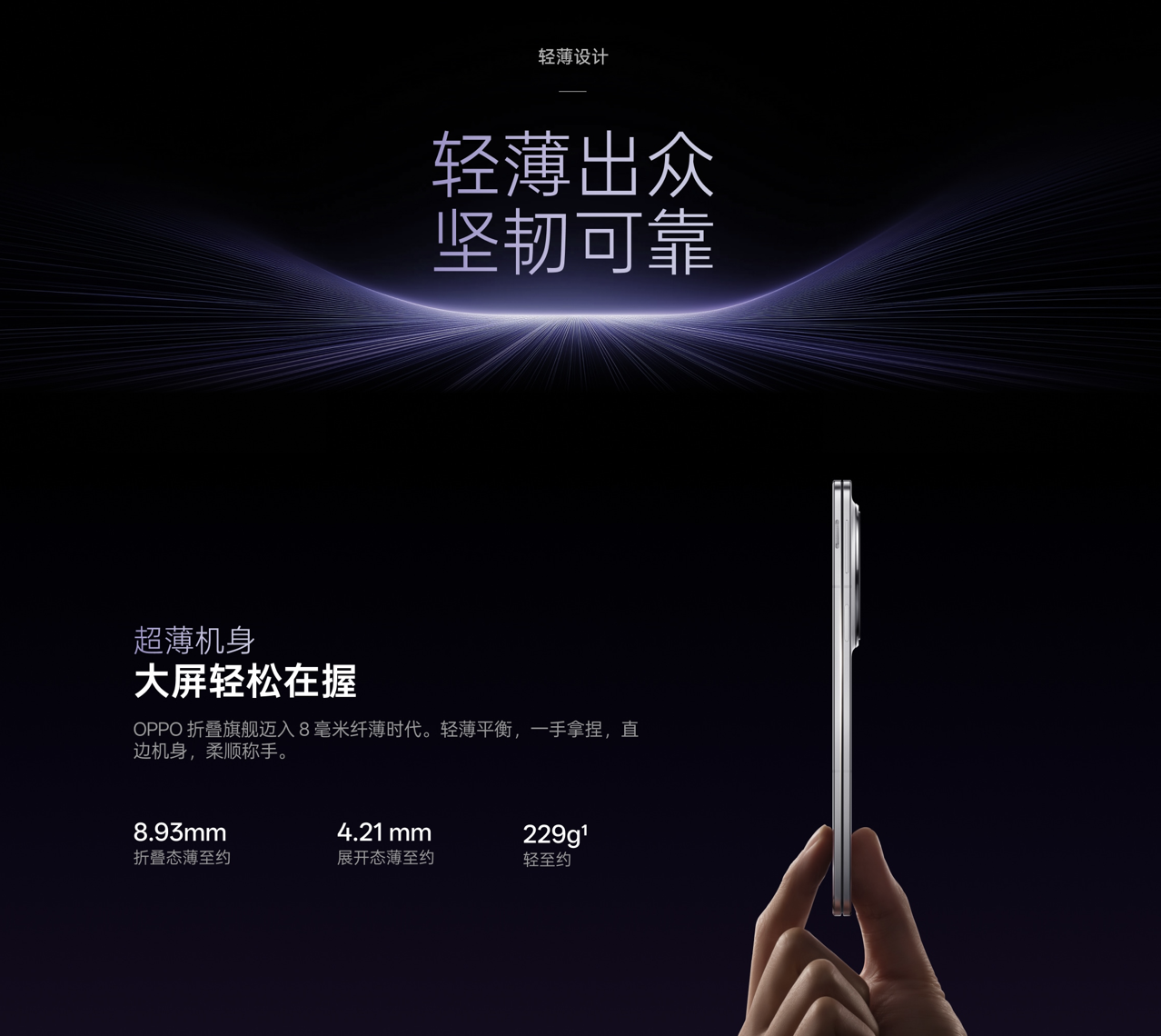
(Image source: OPPO official)
The new generation of this product is clearly a compromise for thinness and lightness. The thickness and weight have indeed decreased significantly, making the phone more aesthetically pleasing and in line with market demands. However, the uniqueness of the previous generation has vanished. It is said that we can still see traces of the previous generation in the new model to some extent, but this foldable smartphone seems almost like a new entity. The only connection with the previous generation may be the naming convention.
More importantly, in terms of configuration, the new foldable smartphone has been severely compromised, with the battery and camera being the first to suffer. This is not surprising. The "thinner" feature alone determines that the battery capacity will be smaller, and the thickness of the camera module will also be reduced. Not to mention that the "lighter" standard will further exacerbate these compromises. Therefore, when comparing the new and old products, we find that the configuration of the new one is actually inferior to that of the old one.
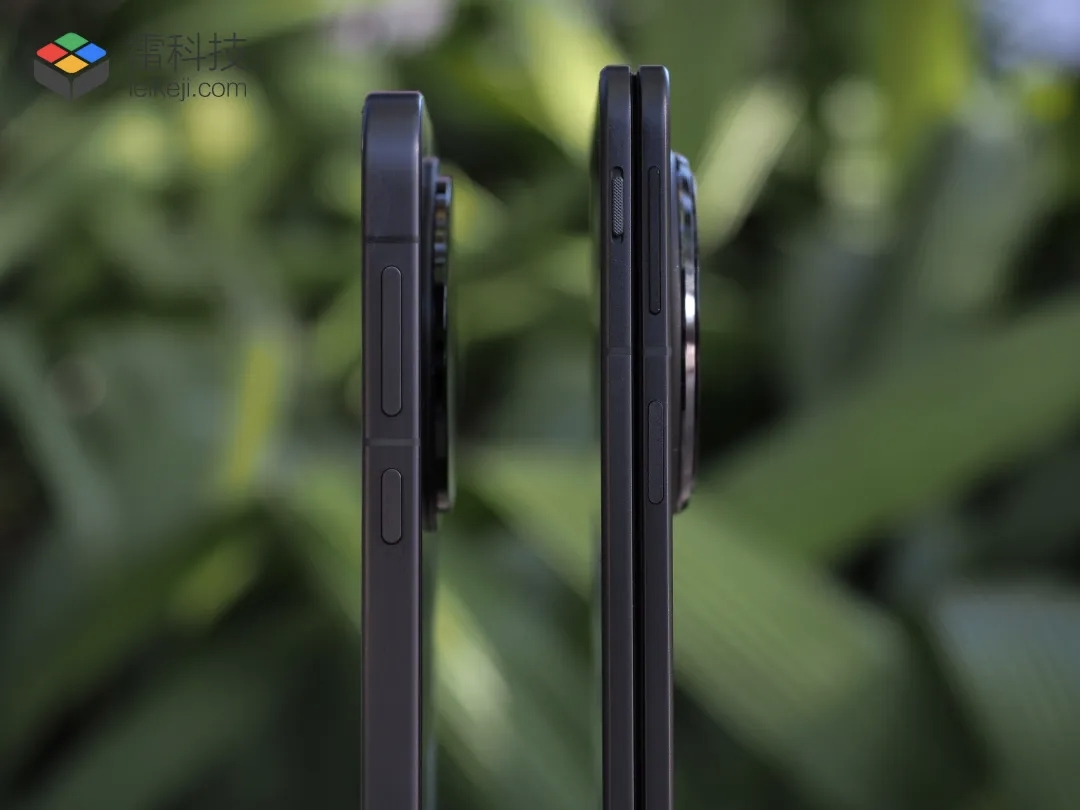
(Image source: Leitech production)
Although the pricing is indeed much cheaper, this is an inevitable result of a mature supply chain and has little to do with the manufacturers themselves.
Moreover, thinness and lightness have also led to a dilemma: product homogenization. In the early days, each manufacturer's foldable smartphone products had their own unique selling points. Some focused on "small-sized horizontal foldables," some on "rugged designs," and some on "imaging capabilities surpassing flagship phones." But now, all manufacturers are doing the same thing: reducing weight, thickness, and increasing battery capacity. However, the biggest pain points of foldable smartphones—creases, durability, and software compatibility—which truly affect the user experience, have seen minimal breakthroughs.
It's akin to everyone in a knife-forging competition comparing whose knife looks better while ignoring whether the knife is durable.
Leitech certainly does not deny that thinness and lightness are future development trends for foldable smartphones. However, the relentless pursuit of these attributes seems somewhat disconnected from the original intention of foldable smartphones. Therefore, in Leitech's view, foldable smartphones do not need to excessively pursue thinness and lightness; simply pursuing lightness is sufficient, as thinness without lightness is meaningless.
Based on Leitech's years of evaluation experience, a combination of lightness and a large battery may be more favored. A slightly thicker body can accommodate a larger battery and slightly better imaging specifications. Of course, the camera doesn't need to be overly stacked; mainstream sub-flagship imaging specifications are sufficient.
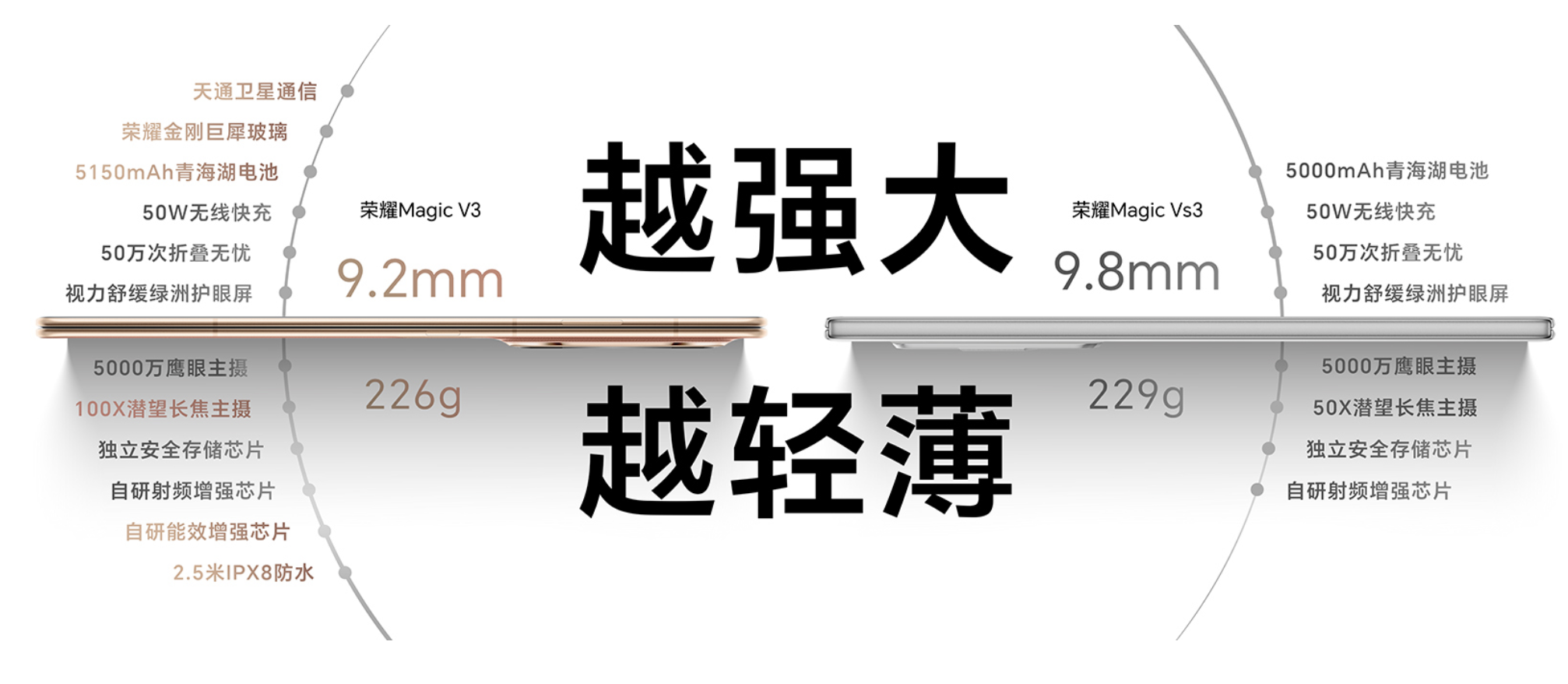
(Image source: Honor official)
As for the stacking method comparable to imaging flagships, Leitech believes it is equally meaningless. In mobile phone products, stacking equals increasing weight: whether it's imaging specifications or performance specifications, adding sensors, lenses, and heat dissipation structures will increase the weight of the entire phone. Once the phone becomes heavier, the handling feel is greatly reduced.
More importantly, the internal structure of foldable smartphones is inherently more sophisticated than that of straight smartphones. With various components such as hinges, two high-quality screens, batteries, and imaging sensors, it is almost impossible to achieve the same level of quality as straight smartphones in the short term. In other words, the durability of foldable smartphones is actually worse than that of straight smartphones at present. If manufacturers do not obsessively compete on weight and thickness, they may have an opportunity to optimize the internal structure.
In Leitech's view, at this stage, rather than competing on weight, foldable smartphones should focus on how to make them truly user-friendly. After all, what we want is not a foldable smartphone that is thinner and lighter than flagship straight smartphones but a practical tool that can be easily carried in our pockets.
Should foldable smartphones prioritize thinness and lightness or experience?
Setting aside weight and thickness, a foldable smartphone also includes many other dimensions of evaluation criteria, such as creases, battery life, screen quality, signal strength, performance, imaging capabilities, system experience, and price. These criteria are the standards for determining whether a foldable smartphone is excellent. However, for the vast majority of users, its current biggest significance lies in providing a sense of novelty and emotional value, making it difficult to meet other rigid functional requirements.
In other words, what foldable smartphones can do, straight smartphones can also do. Of course, foldable smartphones are indeed more convenient than straight smartphones in some light office scenarios like browsing files and reviewing documents, but this convenience is limited and far from revolutionizing the mobile phone landscape. This makes foldable smartphones seem less prominent than we imagined.

(Image source: vivo official)
In fact, designing foldable smartphones with similar needs to computer office work is the design approach they should take. However, looking at the current market, it seems that most manufacturers have not done so. Instead, they still treat foldable smartphones as phones that can be flipped open. This is the core pain point.
Some readers may argue that the main features of mobile phones are performance, imaging, and entertainment, and that office attributes should be left to computers. However, everyone knows that since their inception, the primary feature of foldable smartphones has always been "light office work." Manufacturers have indeed introduced various functions such as multitasking, PC-level Word documents, and dual-screen parallel display, but this is far from enough. For example, some computer pages are still not fully displayed on mobile phones, and functions may be lacking, far from meeting everyone's demand for "light office work."
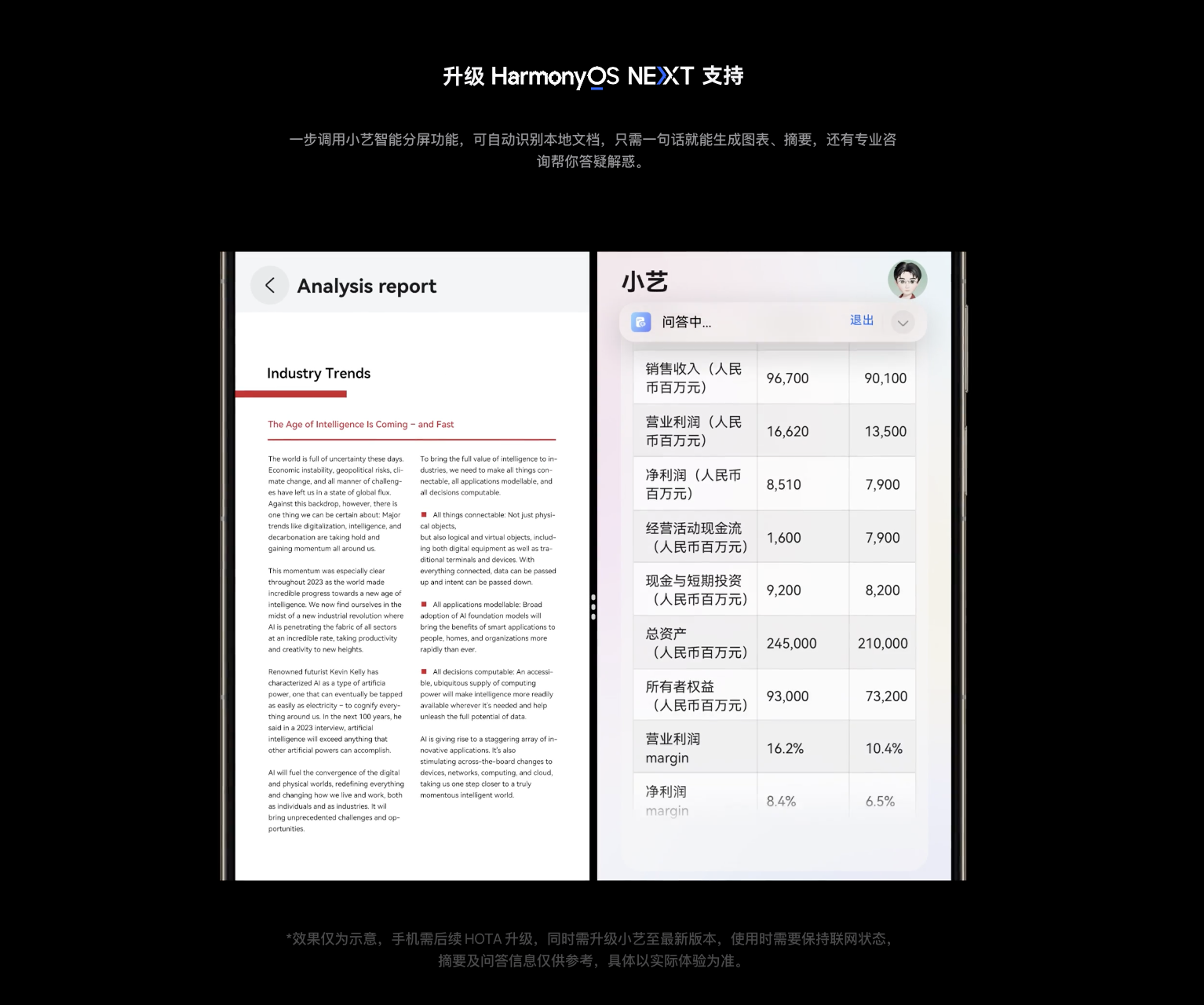
(Image source: Huawei official)
Of course, these are all viewpoints before a large number of foldable smartphones have been released. Judging from the information currently leaked online, Honor's Magic V5, vivo's X Fold 5, and Huawei's Mate X7 will all bring more practical functions in terms of office attributes. Leitech hopes that manufacturers can focus more on functionality and practicality. In the short term, it is indeed misplaced priorities to continue to compete over those fractions of a millimeter and grams of thinness and lightness.
Postscript
The true innovation of foldable smartphones lies not in breaking records but in solving problems.
Or to put it another way, with the current technical capabilities of mobile phone manufacturers, making foldable smartphones thin and light is a basic skill and should not be the focus of most promotional efforts.
Of course, Leitech also hopes that manufacturers will continue to strengthen the durability of foldable smartphones, so that users do not have to spend thousands of dollars on a foldable smartphone only to face after-sales repair costs that are one to two times higher than those of straight smartphones.
Source: Leitech
Images in this article are from: 123RF Licensed Image Library

